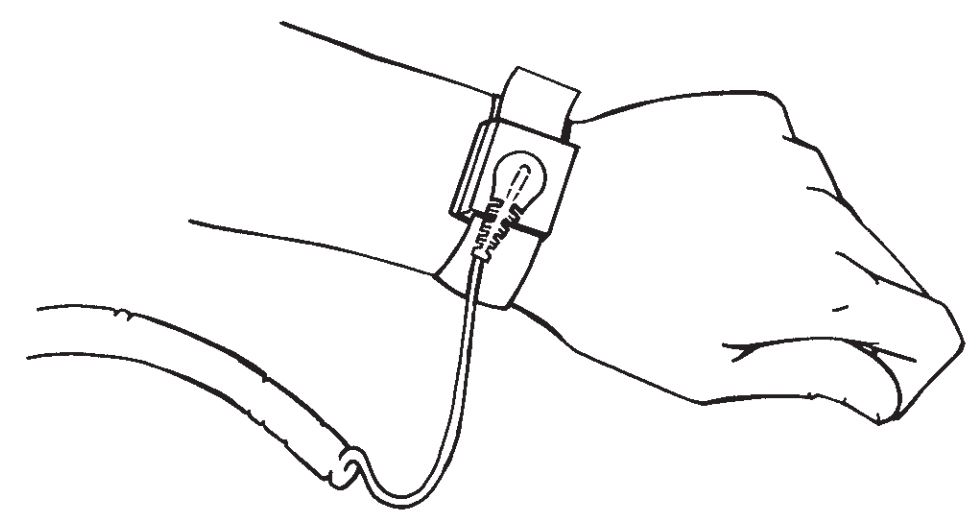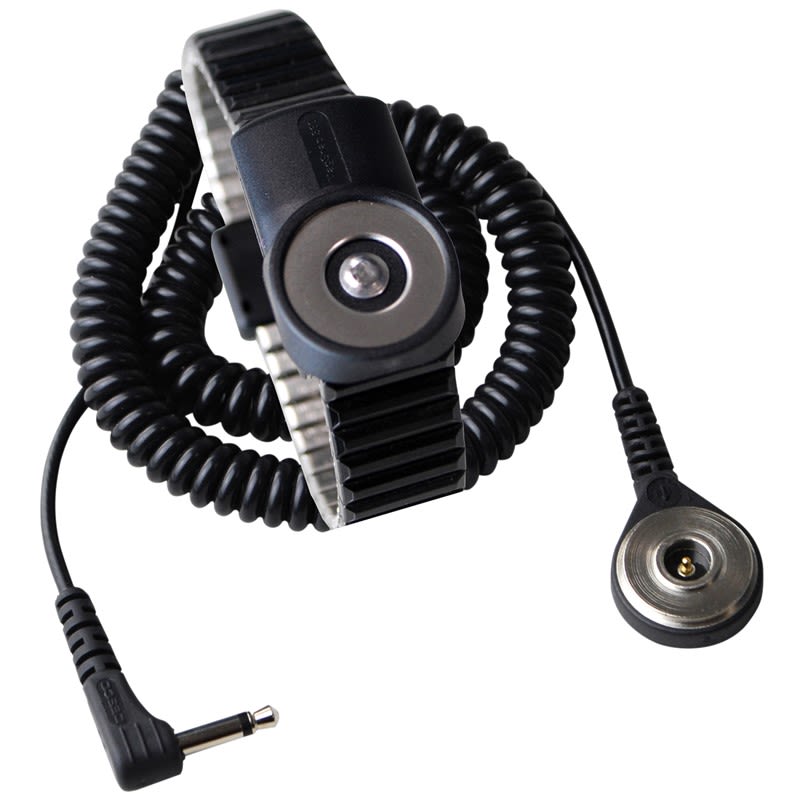How to reduce the risk of damaging ESD sensitive devices in critical applications
Follow articleHow do you feel about this article? Help us to provide better content for you.
Thank you! Your feedback has been received.
There was a problem submitting your feedback, please try again later.
What do you think of this article?
Do your employees handle ESD sensitive high-end components that would be extremely expensive to replace if they failed? If so, you want to make sure that the risk of ESD damage is as low as possible. Today’s blog post will look at an option of protecting your critical applications: dual-wire wrist straps.
Introduction
In an ESD Protected Area (EPA) all surfaces, objects, people and ESD sensitive devices (ESDs) are kept at the same potential. This is achieved by simply using only ‘groundable’ materials that are then linked to ground.
Wrist straps are the most common personnel grounding device and are used to link people to ground. They are required if the operator is sitting. A wrist strap is made up of two components:
- a wrist band that is worn comfortably around your wrist and
- a coil cord that connects the band to an Earth Bonding Point (EBP).

Components of a Wrist Strap
Advantages of Dual-Wire Wrist Straps
Dual-wire wrist straps have two conductors (compared to single-wire monitors which have only one conductor inside the insulation of the coil cord). They offer a reduced risk of damaging ESD sensitive devices because even if one conductor is severed, the operator still has a reliable path-to-ground with the other conductor. For that reason, they are generally used in critical applications. Dual-wire wrist straps:
- eliminate intermittent failures and
- extend the lifespan of wrist straps.
Example of a Dual-Wire Wrist Strap (885-3489)
Using Dual-Wire Continuous Monitors
For maximum benefits dual-wire wrist straps should be used together with dual-wire continuous monitors. So instead of connecting your coil cord to an Earth Bonding Point, you would connect it to your Continuous Monitor. The operator will be grounded and at the same time monitored. Continuous Monitors provide operators with instant feedback on the status and functionality of their wrist strap and/or workstation. They detect split-second failures when the wrist strap is still in the "intermittent" stage. This is prior to a permanent "open" which could result in damage to ESD sensitive components.
“Since people are one of the greatest sources of static electricity and ESD, proper grounding is paramount. One of the most common ways to ground people is with a wrist strap. Ensuring that wrist straps are functional and are connected to people and ground is a continuous task.” “While effective at the time of testing, wrist strap checker use is periodic. The failure of a wrist strap between checks may expose products to damage from electrostatic charge. If the wrist strap system is checked at the beginning of a shift and subsequently fails, then an entire shift’s work could be suspect.” “Wrist strap checkers are usually placed in a central location for all to use. Wrist straps are stressed and flexed to their limits at a workstation. While a wrist strap is being checked, it is not stressed, as it would be under working conditions. Opens in the wire at the coiled cord’s strain relief are sometimes only detected under stress.“ [ESD TR 12-01 Technical Report Survey of Constant (Continuous) Monitors for Wrist Straps]
Example of a Dual-Wire Continuous Monitor (685-8787)
pDual Polarity Technology provides true continuous monitoring of wrist strap functionality and operator safety according to accepted industry standards. Dual-wire systems are used to create redundancy. In critical applications you build-in redundancy in order to have a backup if your primary fails. That’s the concept. With dual-wire wrist straps the redundancy is there as a protection rather than an alternative. If you are monitoring your dual-wire wrist strap and one wire fails, then the unit will alarm. You will still be grounded by the other wire, so there will be a significantly reduced risk of damaging ESD sensitive components if you happen to be handling them when the wrist strap fails. The wrist strap would still need to be replaced immediately.
Resistance (or dual-wire) constant monitors are “… used with a two wire (dual) wrist strap. When a person is wearing a wrist strap, the monitor observes the resistance of the loop, consisting of a wire, a person, a wristband, and a second wire. If any part of the loop should open (become disconnected or have out of limit resistance), the circuit will go into the alarm state.” “While the continuity of the loop is monitored, the connection of the wrist strap to ground is not monitored.” “There are two types of signals used by resistance based constant monitors; steady state DC and pulsed DC. Pulsed DC signals were developed because of concerns about skin irritation. However, pulse DC units introduce periods of off time (seconds) when the system is not being monitored.“ [ESD TR 12-01 Technical Report Survey of Constant (Continuous) Monitors for Wrist Straps]
Conclusion
And there you have it: if you do have a critical application, make sure you use dual-wire wrist straps together with dual-wire continuous monitors.



